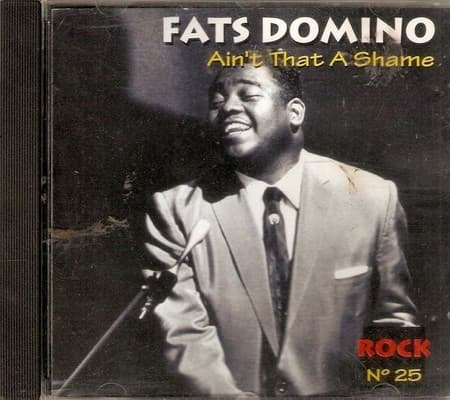
The Piano Roll that Echoed a Revolution: A New Orleans Triumph
Oh, the memories a song can unlock! If you were listening to the radio in 1955, the year the world began to truly spin on a new axis, you couldn’t escape the sound of Antoine “Fats” Domino Jr. and the record that truly cracked the segregated pop music scene wide open: “Ain’t That a Shame.” More than a mere chart-buster, this song is a cultural landmark, a vibrant, soulful blast of New Orleans R&B that serves as a cornerstone of rock and roll itself. It’s a testament to the sheer, irresistible talent of a man who needed no more than his rolling piano and easy, infectious charm to change the soundtrack of a generation.
The record, initially released on Imperial Records under the misprinted title “Ain’t It a Shame,” was an immediate smash on the R&B charts, sailing all the way to Number 1—a familiar sight for Fats Domino, who already had a string of hits in that world. However, its significance lies in its groundbreaking “crossover” success. In a time when mainstream radio often resisted Black artists, this tune smashed the barrier, climbing to an impressive Number 10 on the overall Billboard Pop chart, marking the first time a Fats Domino record had reached the Pop Top Ten. This achievement was pivotal, ushering his distinctive New Orleans sound into millions of white American homes and jukeboxes.
The story behind its rise is fascinating—and perhaps, in a way, embodies the meaning of the song’s title in a very different context. The co-written lament by Fats Domino and his long-time creative partner Dave Bartholomew is lyrically simple yet universally resonant: a sweet, sorrowful reaction to a lover’s departure. The lyrics—”You made me cry, when you said goodbye… Ain’t that a shame, my tears fell like rain”—are delivered with a casual, almost shrug-of-the-shoulders acceptance that makes the heartbreak feel all the more genuine. It’s the sound of a man picking himself up, but not before allowing himself a brief, soulful moan of self-pity.
But the real twist of fate, the part of the story that still stings with the memory of the era’s racial politics, was the simultaneous success of a sanitized cover version. A popular white singer, Pat Boone, recorded his own much milder take, which, thanks to the segregated nature of radio and the music industry, shot all the way to Number 1 on the Pop chart. Though it felt like an injustice at the time—a white performer eclipsing the Black originator—Domino, with his characteristic generosity and practicality, later remarked that Boone’s cover ultimately served to draw more attention to his more raw and soulful original. He even joked that the royalties from Boone’s success bought him a beautiful diamond ring. An anecdote like that only enhances the image of Fats Domino as the “King of Rock and Roll” that Elvis himself declared him to be—a humble genius who was above the fray.
Recorded in Hollywood, California, while Fats was on tour, the song captured the quintessential Domino sound: that steady, rolling bass rhythm laid down by his left hand on the piano, the joyous, triplet-filled right-hand riffs, and his warm, gentle voice that was as comforting as a summer evening in the French Quarter. It’s a sound that influenced countless musicians, most famously a young John Lennon, who revealed that “Ain’t That a Shame” was the first rock and roll song he ever learned to play. To listen to it today is to revisit the very moment a cultural wall began to crumble, giving way to a new sound that was simply too vibrant, too authentic, to be contained. It’s a moment of pure, undiluted musical history, packaged in a two-and-a-half-minute masterpiece of heartbreak and boogie.